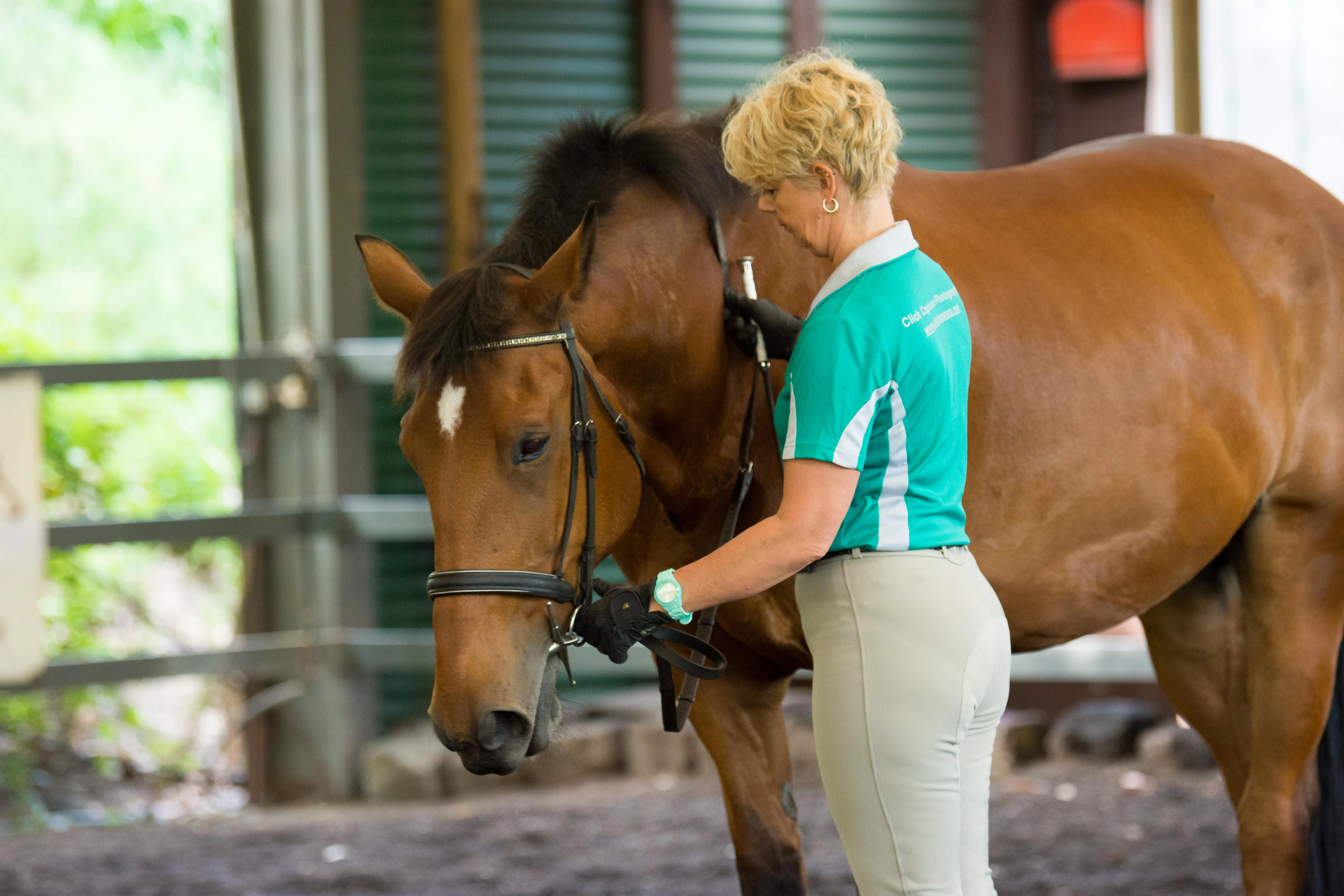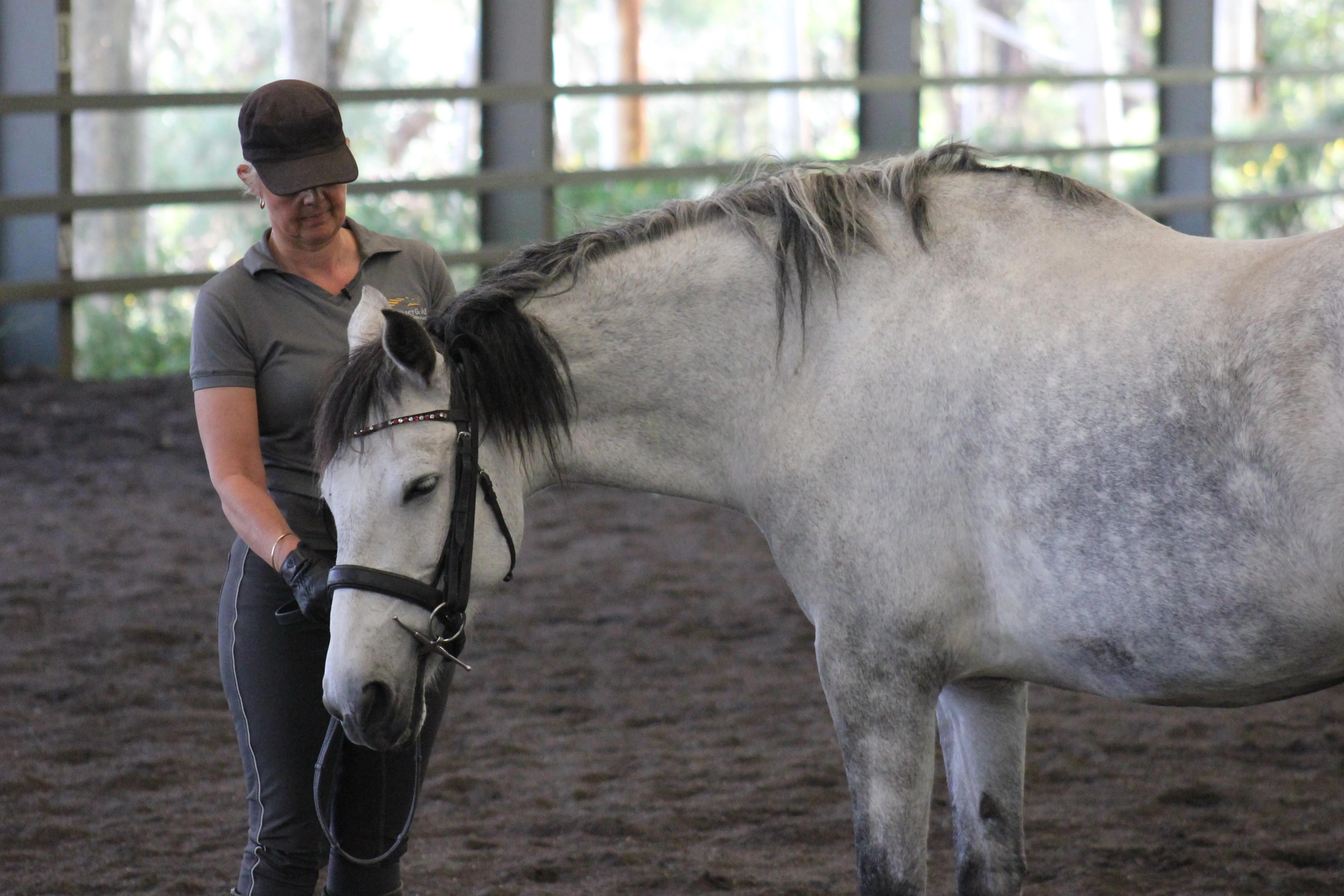The Importance of Neck Extension in Training Horses – Building Strength, Balance and Relaxation
When we talk about building a strong, sound and rideable horse, one of the most underrated but essential components is “neck extension”. While it might look simple – a horse stretching their neck long and forward – the benefits it brings to posture, relaxation, core strength, and overall balance are massive. Whether you’re working a young horse, bringing one back into work or refining the foundation on an experienced horse, incorporating quality neck extension into your training is an absolute game changer.
Let’s unpack why neck extension is so important, how it impacts the horse’s entire body (and mind), and why developing this posture properly allows both horse and rider to move in balance – without the need for strong rein contact.

What is Neck Extension and What Does It Do?
Neck extension refers to the horse lengthening its neck forward and down, ideally while staying soft and connected through the body. You might hear it called “long and low” or “stretchy frame” – and while it sounds simple, when done properly, it’s far more than just the horse putting its head down.
True neck extension:
* Encourages “core engagement and hindquarter activity”
* Allows the horse to “lift through the back and withers”
* Promotes “relaxation and mental softness”
* Helps the horse “develop correct posture and muscular strength”
* Builds a “foundation for self-carriage and balance”
Rather than just thinking of it as a ‘head down’ exercise, we need to see it as a “whole-body position” that helps the horse control their balance, strengthen their core and develop a postural frame that leads to longevity in their ridden work.
Why It’s So Important in Early Training (and Beyond)
Many issues we see in ridden horses – whether it’s stiffness, a hollow back, heaviness in the bridle, sore shoulders or even behavioural resistance – stem from poor posture and imbalance.
When we start young horses, or retrain older ones, the goal should be to “teach them how to carry themselves” in a way that supports their body. Neck extension is a vital step in that process.
In a natural, untrained state, many horses tend to carry more weight on the forehand. They’ll often rely on their front legs to pull themselves along, rather than pushing from behind. The result? Tension in the shoulders, shortened stride, and a lack of true engagement.
Neck extension encourages the horse to “reach forward through the neck and open the thoracic sling”, allowing the withers and spine to lift. In doing so, the horse begins to “activate the deep core muscles” and shift more weight towards the hindquarters. It’s this process that develops the strength and flexibility needed for proper engagement and eventual collection – and it all starts with the stretch.
Core Strength, Pelvis Flexion and Balance – The Real Mechanics
Let’s get into the nitty gritty. :)

To hold a correct long and forward frame, the horse needs to:
* Activate the “deep core muscles” (the same ones that support the spine and ribcage)
* Use their “hind end” to push, not just trail behind
* Maintain a “flexed pelvis”, which supports the lifting of the back
* Keep the “rhythm and tempo” consistent
This posture “isn’t passive” – it takes real effort from the horse to maintain it. Think of it like a yoga pose for horses – it might look relaxed and gentle from the outside, but it’s doing a lot internally. When a horse stretches long and forward correctly, they’re learning how to “move in self-carriage”, not falling onto the forehand or leaning into the bridle.
Importantly, this doesn’t mean the horse is just being allowed to slump forward and stretch however they like. Quality neck extension means the horse is stretching through the “topline”, not dropping down into the base of the neck. You’re looking for the nose to reach “forward” and “slightly down”, with a soft, swinging back and an active hind leg.
The Link Between Neck Extension and Relaxation
Horses are prey animals, and their instinct is to brace and lift their head when they’re tense, unsure or feel unbalanced. Encouraging a horse to lower and extend their neck helps switch on the “parasympathetic nervous system” – the part of the brain that signals relaxation and safety.
You’ll often see signs of release when you’re working on neck extension – licking, chewing, blinking, blowing out. That’s because we’re helping the horse find a place of mental calmness “through physical softness”. The more time they spend in this posture, the more they associate training with safety and confidence.
That’s not just helpful for relaxation’s sake – it sets the tone for the rest of the training. A horse that can relax and carry themselves in a balanced frame from the start will learn faster, stay sounder, and be more willing as they progress.
Benefits to the Rider – Balance Without the Reins
One of the best things about teaching horses proper neck extension and balance is the effect it has on the “rider”.
When a horse is truly stretching forward and carrying themselves in balance, the rider no longer needs to “rely on the reins” to control tempo, direction or outline. Instead, you can begin to ride more from your seat, weight and legs – developing “true communication and harmony” with the horse.
This is especially important for young or green horses. We don’t want them to learn that balance and posture only come from contact with the bit. We want them to understand how to move through their body correctly from the very beginning, and allow the rider to sit quietly in rhythm without interfering.
The result? Riders develop a “more independent seat”, a more educated feel and a horse that’s responsive to the body rather than just the hands. It’s the cornerstone of light, correct, and connected riding.
Common Mistakes and How to Avoid Them
Like any good thing, neck extension can be misused if we’re not careful.
Some common pitfalls include:
* Allowing the horse to fall onto the forehand without engagement behind
* Pulling the head down with the reins rather than encouraging the stretch from behind
* Mistaking low head position for true stretch (watch for shortening at the base of the neck)
* Not riding forward enough – the horse must move actively into the stretch, not just dawdle
To avoid this, focus on:
* Riding the horse “from the hind legs forward”
* Using “transitions, circles and poles” to encourage activity and reach
* Keeping the “frame adjustable” – allow moments of stretch, then bring the horse back up and forward again
* Always rewarding the effort with softness and praise
Integrating Neck Extension into Your Program
Neck extension shouldn’t just be a “stretch at the end of the ride”. It should be part of every stage – warming up, transitions, cool down and everything in between.
Here are some ideas:
* Use a "stretchy walk on a long rein" to begin and end your rides
* In trot, ask for "short moments of stretch", then ride back up into a working frame – this teaches adjustability
* Use "ground poles and shallow lateral work" (like baby leg yields) to encourage suppleness through the body
* On the lunge, encourage the horse to stretch long and forward "without any artificial aids", to build balance naturally
In our training programs, we focus on developing this frame early on – often from the very first groundwork sessions – so that by the time a horse is under saddle, they already understand how to find balance through posture and rhythm.
Longevity, Soundness and Softness – the Payoff
Training with neck extension in mind isn’t about gimmicks or fads – it’s about building horses that are "strong, soft, supple and mentally relaxed". When we prioritise posture and self-carriage from the beginning, we help prevent common training issues and soundness problems down the track.

A horse that knows how to use their body correctly will:
* Be less prone to injury
* Stay sound and rideable into old age
* Be more willing and relaxed in their work
* Offer a more enjoyable ride for their human
It’s one of the simplest yet most powerful tools in our training toolbox – and it’s accessible to every horse and rider, regardless of discipline or level.
In Summary
Neck extension is far more than a nice stretch – it’s the "foundation for strength, balance, and long-term soundness". It helps the horse develop physically and mentally, allowing them to work in a posture that promotes core strength, correct biomechanics and emotional softness.
For the rider, it offers a chance to ride in true connection – not from the hand, but from the seat and the feel. Whether you’re starting a youngster, retraining or refining an older horse, don’t underestimate the power of a good, correct stretch.
At the end of the day, we’re not just training movement – we’re training "posture", "balance" and "understanding".
